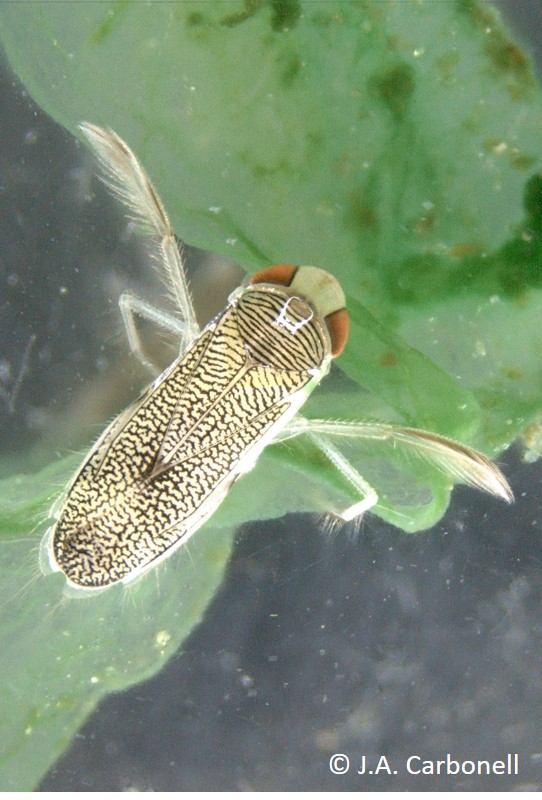The corixid Trichocorixa verticalis originates from North America and is the only aquatic hemipteran alien to Europe. It is spreading in south-west Iberia where it is the dominant corixid in permanent, saline wetlands, where it may have excluded halotolerant native corixid species. In the Doñana wetland complex in south-west Spain, it is abundant in temporary brackish ponds but almost absent from temporary fresh ponds where the native Sigara lateralis is the dominant corixid. an outdoor experiment was conducted to test whether the alien is intolerant of low salinities, or if it can be competitively excluded by the native species S. lateralis. Single species tanks were established for each species in semi-natural conditions, as well as mixed species tanks and controls lacking corixids. Trichocorixa verticalis was able to complete its life-cycle at a low salinity of 2 g/l. Compared to S. lateralis, it showed higher daily adult mortality and nymph production, but a shorter generation time. When mixed together, both species had lower adult mortality than in the alone treatment, suggesting they can coexist. Adult abundance at the end of the experiment was highest for T. verticalis, which performed better in mixed tanks whereas S. lateralis performed better alone. These results confirm that T. verticalis can tolerate freshwaters and suggest that its rarity in these ponds in nature is due to other ecological factors such as dispersal limitation, poor adaptation to fluctuating water levels, or the effects of ectoparasitic water mites known to prefer the alien as a host. informacion[at]ebd.csic.es: Carbonell et al (2020) An experimental test of interspecific competition between the alien boatman Trichocorixa verticalis and the native corixid Sigara lateralis (Hemiptera, Corixidae). Aquatic Invasions 15(2): 318– 334 DOI 10.3391/ai.2020.15.2.07
https://www.reabic.net/aquaticinvasions/2020/AI_2020_Carbonell_etal.pdf

 Open Call for Research Projects in ICTS-Doñana!
Open Call for Research Projects in ICTS-Doñana!



